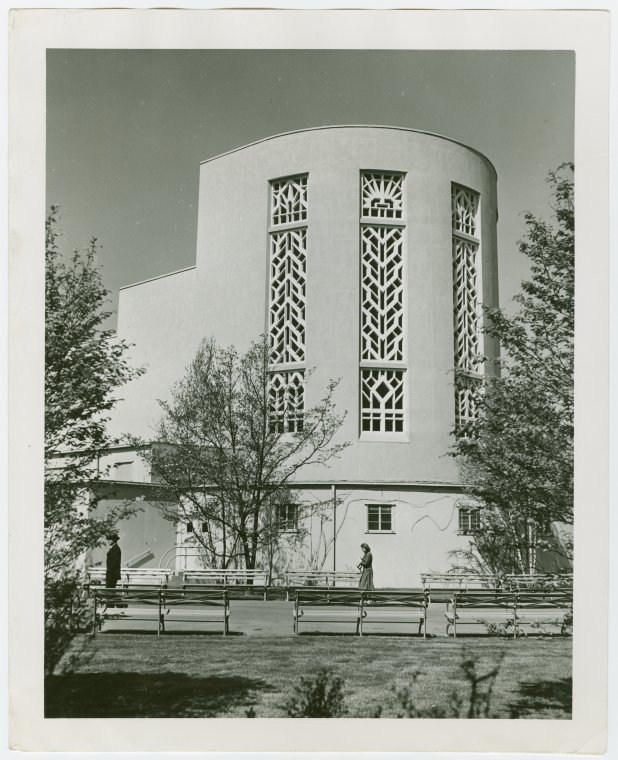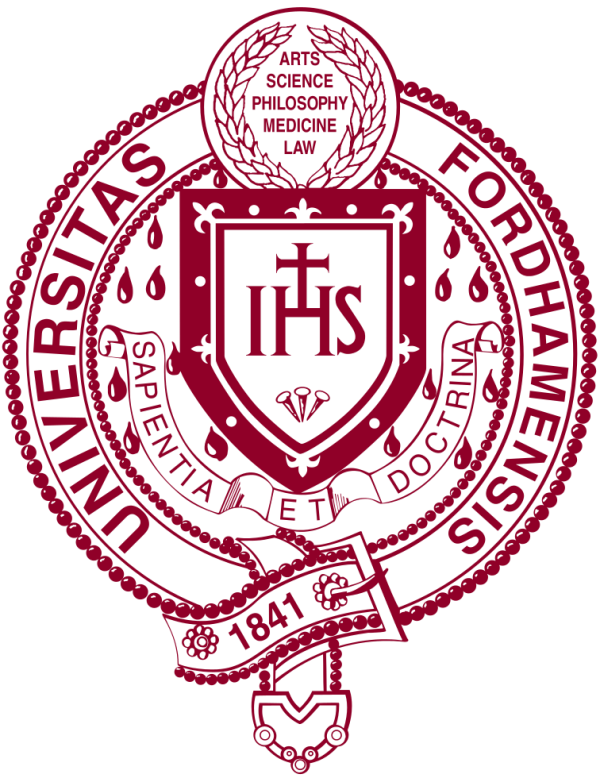African Traditional Religions and the Limits of the Interfaith Model, the Impact of Colonialism, and the Implications of Christian Supremacy for Scholars
by Megan Farr
The Interfaith Center of New York, located in the Morningside Heights neighborhood, works to mobilize religious and faith leaders from across New York City to address community needs, including those related to mental health, the COVID-19 pandemic, and gun violence, among others. As well as hosting conferences for local leaders, connecting leaders with resources, and offering a space where leaders can connect with each other to create interfaith dialogue, the Center also offers support to the Mayor’s Office of New York, which often disseminates information to communities via local faith leaders. Work with the Interfaith Center inherently provides an opportunity for community engagement, due to its focus on mobilizing and engaging religious leaders from across New York. Dr. Henry Goldschmidt, Director of Programs for the Interfaith Center, proposed a project for this course’s community engaged learning component, based on the needs the Center saw within faith communities in New York and their communication with the Mayor’s Office. At our initial meeting, Dr. Goldschmidt explained that the communications disseminated by the Mayor’s Office, while sent to all religious leaders in the City, are often written with specific types of religions in mind. That is, the communications often ask leaders to “tell their congregation during a sermon,” or “let people know at a weekly meeting.” In his experience at the Center, Dr. Goldschmidt noticed that many faith communities were at a loss for how to communicate this information to their community members, because several faith communities in New York, especially those of the African religious tradition, have community faith structures that differ radically from those of Abrahamic religions, in which people meet at least once a week and there is a structured community program.
For my community engagement project, I stepped in to help Dr. Goldschmidt and the Interfaith Center study political engagement in African religious communities, with the goal of developing a resource to distribute to the Mayor’s Office about political engagement in Africa religious communities. My planned methodology for this project was interviewing faith leaders with whom Dr. Goldschmidt connected me about their community’s preferred style of political engagement, as well as the role faith leaders play in social and political issues in a given community. My research was to explore the questions of how different religious traditions of the African diaspora engage politically in their communities, how information is disseminated in faith communities, and what role, if any, faith leaders play in various political engagement processes. I attempted to make contact with several faith leaders, though I was only able to interview a few leaders, meaning that I had to alter my final report for the Interfaith Center to focus more on the historical and theological research I did into African Traditional Religions (ATR), with the goal of developing a report future scholars undertaking this project would be able to use as a reference alongside interviews. In undertaking this report, I considered several resources from religious studies scholars, which I used to develop a framework for understanding ATR in a historical and theological context.
Further, I was able to uncover several connections between the themes of our Religion in NYC course and the themes of my project. Using Tomoko Masuzawa’s work on “world religions” and J. Terry Todd’s work on religious pluralism, I analyze how colonial and white supremacist forces may have contributed to the sidelining of African Traditional Religions in both the religious studies academy and in modern political and religious movements. Both of the faith leaders I interviewed for this project commented on the insidious nature of the exclusion of ATR from contemporary categories of “world religions,” and spoke back to those who would exclude ATR and polytheistic communities from theological debates and conversations.
As part of this project, I was able to conduct a community faith leader interview between myself and Hillel, who is a practitioner of Batuque, which is a Yoruba-derived tradition from the south of Brazil. Hillel mostly spoke about ATR in the broad sense, providing important background for this project on different traditions in South America and the Caribbean that are derived from ATR and academic information about transmission and translation of religious traditions. Hillel came to Batuque from Orthodox and then Reform Judaism, where he served as a Rabbi within both traditions. He spoke about his first encounter with ATR that took place when he attended a ceremony of different African religious traditions when he was visiting Argentina. He had a transcendent experience during this ceremony, and began a years-long journey of finding his way out of Judaism and into Batuque. Hillel was initiated in both Batuque and Haitian Vodou, and explained to me how within most ATR, each person who is initiated is initiated into the service of a specific deity, called an orisha, that then guides that person and watches over them. While Hillel and I did not speak directly about political engagement in African diasporic communities, he did provide me with important background information that informed the research I compiled for this community engagement project. Additionally, Hillel helped contextualize many of the academic debates and conversations surrounding ATR, polytheism, and the ideas of interfaith dialogue and religious pluralism. These ideas, in turn, helped me relate my project to our course material, especially to Todd and Masuzawa’s explorations of the limitations of the interfaith model and of the category of “world religions.”
J. Terry Todd argues in his article “The Temple of Religion and the Politics of Religious Pluralism” that the founding of the Temple of Religion in New York for the World’s Fair in 1939 reveals the intentions and assumptions behind the framing of “religious pluralism” in the United States as based on the “idea of Judeo-Christian America” (Todd, 202). The Temple and the discourse on religious pluralism surrounding it “appropriated terms such as democracy and liberty,” and implied that the United States, Canada, and Western Europe were “exceptional cases in their support of those values,” further marginalizing those religions that local New York government did not deem to be “American” or in support of “liberty” (Todd, 203). Among these religions, “Buddhists, Baha’is, and so-called cult groups were denied, political views and dissident voices were suppressed” in order to “present the illusion of a nation united” in its Judeo-Christian values, which advocates of the Temple portrayed to be entwined with American values (Todd, 203). As Todd argues, this creation of pluralism “allowed for a controlled display of religious diversity,” while limiting this “diversity” to three groups: Protestant, Catholic, and Jewish (Todd, 211). The blankly decorated Temple of Religion in New York points, not towards inclusion, but towards a surface that can readily be mapped by the majority religion of the people who view it; in this case, white Protestants. Just as a color-blind model of society creates a white person to be the default by not acknowledging and challenging systemic racism in society, a pluralistic and interfaith model that does not interrogate its premises and historical formation creates Protestant Christianity to be the default.

Further, Tomoko Masuzawa argues in The Invention of World Religions that European religious studies scholars held a bias in favor of Christian and monotheistic faiths when they were forming the canon of modern “world religions.” This idea, founded on the belief that Europe was the “harbinger of universal history,” and the center of development and progress, led to the institutionalization of religions into the “venerable East” and the progressive West,” and resulted in a denial of the complexity and religiosity of religions of the Global South (Masuzawa, xi, 4). Masuzawa argues that this division came, in part, from a “racialized notion of ethnic difference,” wherein European and Christian scholars elevated those religions that were practiced mainly by white people or by those in the Global East that were more easily exoticized than those in the Global South (Masuzawa, 3). In this way, Masuzawa’s arguments work with the assertions of faith leaders who expressed doubt that the interfaith model and the adoption of religious pluralism function as intended.
This project, as situated at the intersection of religious studies and political science, represents an important trend in the religious studies academy to work towards greater inclusion and good-faith scholarship on African religions and polytheistic religions. As a community-engagement project, this work provided me with a vital opportunity to synthesize a real-world problem in the greater New York City community with the ideas and debates we discussed in our Religion in NYC course, and I could not have asked for a better way to end my Fordham Theology career.
Thank you to Dr. Henry Goldschmidt, Director of Programming for the Interfaith Center, for his support throughout this process, and to the faith leaders who were willing to be interviewed for this project!
Works Cited
Masuzawa, Tomoko. The Invention of World Religions: Or, How European Universalism Was Preserved in the Language of Pluralism. Chicago, IL: University of Chicago Press, 2005.
Todd, J. Terry. “The Temple of Religion and the Politics of Religious Pluralism: Judeo-Christian America at the 1939-1940 New York World’s Fair.” Essay. In After Pluralism, edited by Courtney Bender and Pamela E. Klassen, 201–22. New York, NY: Columbia University Press, 2010.
Header Photo: Swearing-in ceremony of the first ever GwètòDe’s for the Haitian diaspora by Konfederasyon Nasyonal Vodouyizan Ayisyen (KNVA) held 2/25/2017 at National Black Theatre in Harlem NYC. Photo by Aliceba. CC Attribution-Share Alike 4.0 International.
